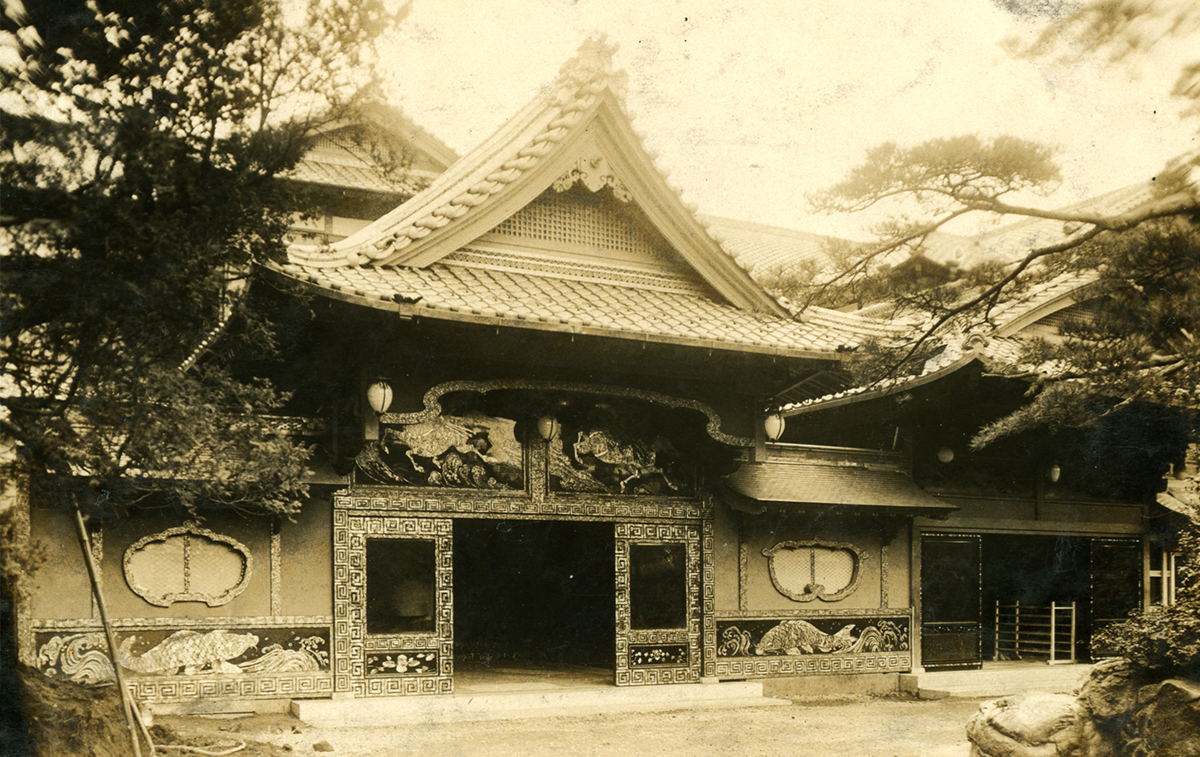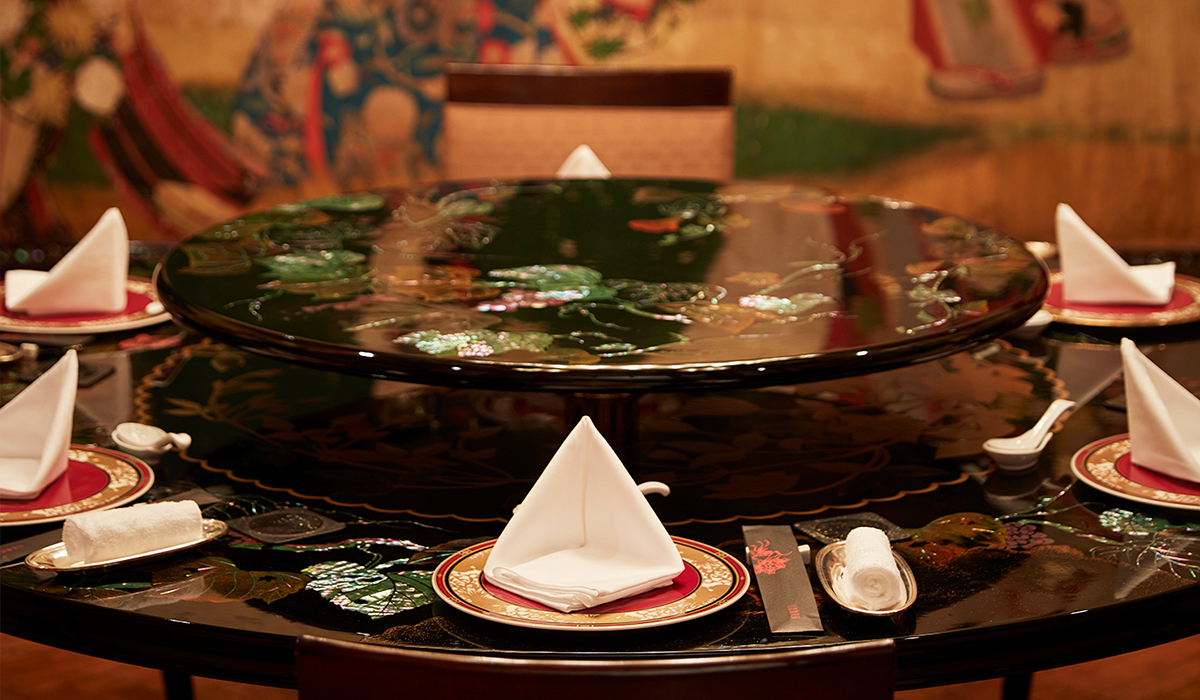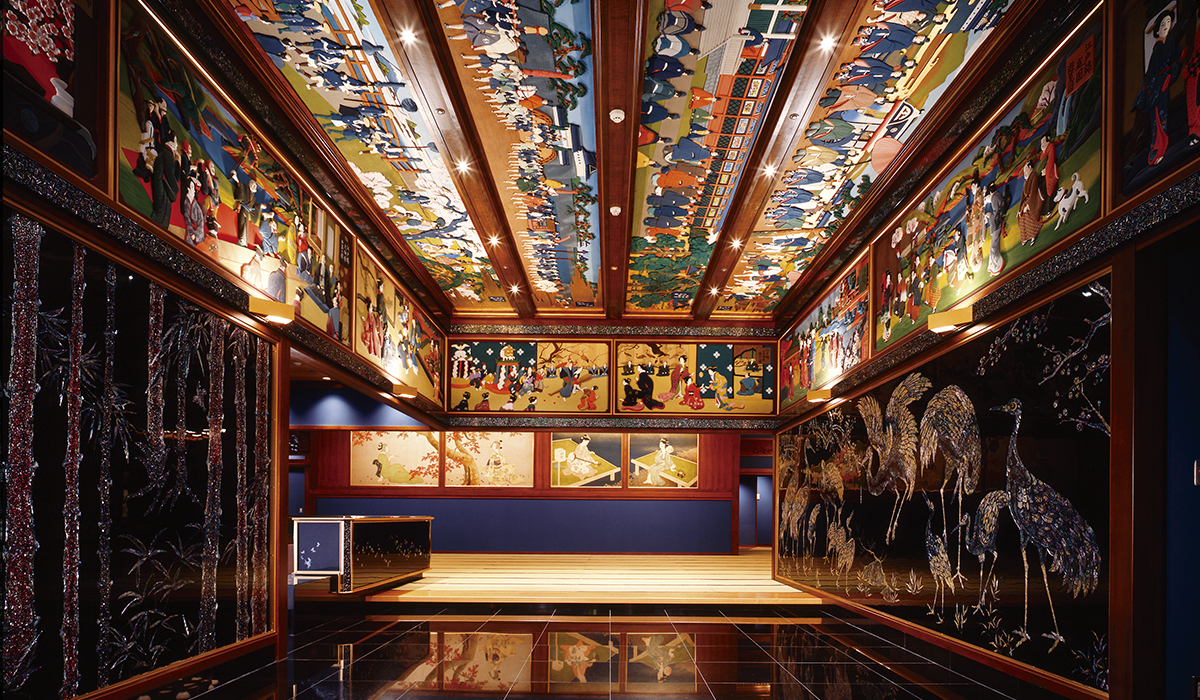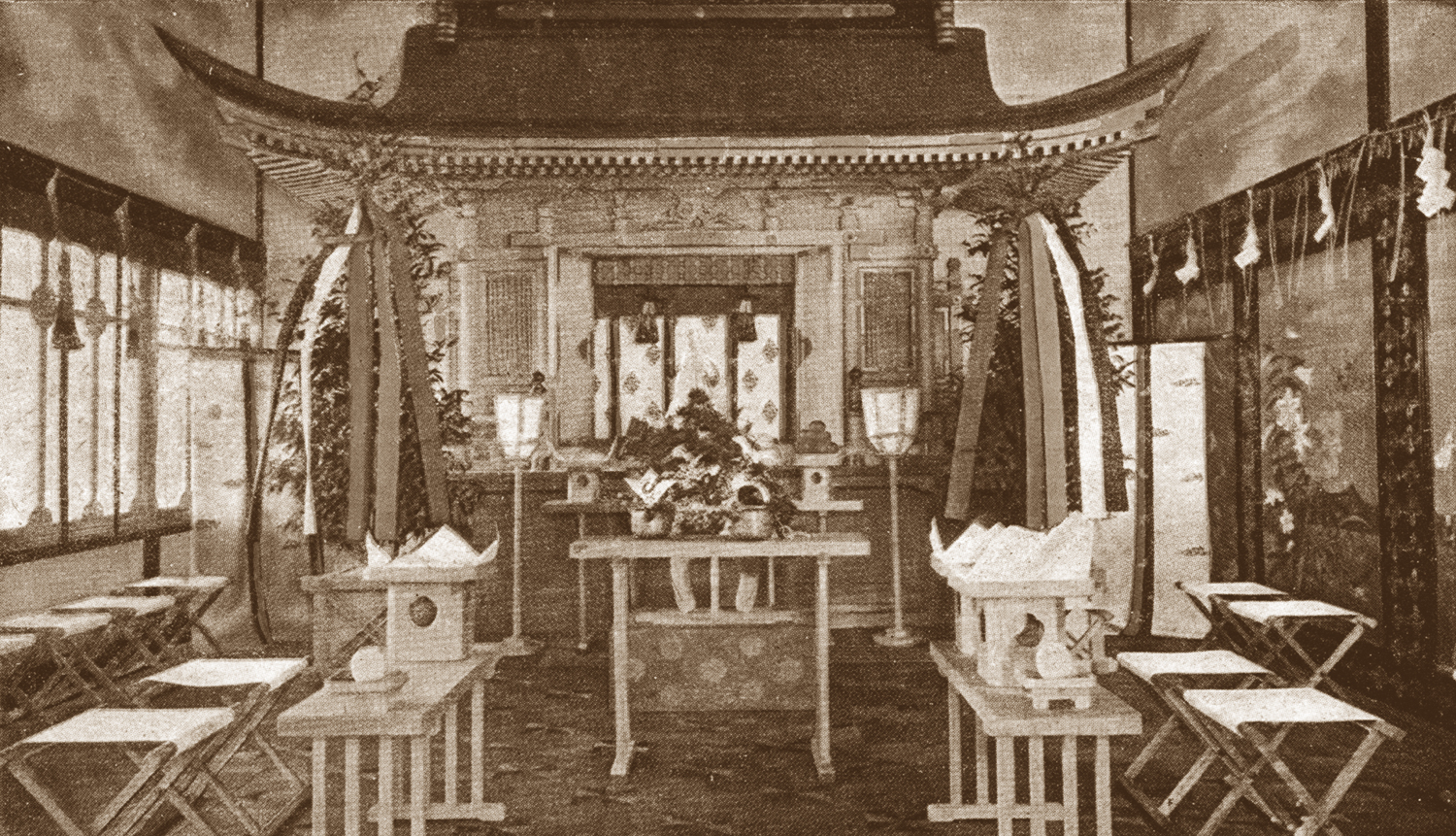History
History of the Hotel
The most magnificent palace of art in the East

The origins of Meguro Gajoen, the predecessor of Hotel Gajoen Tokyo, lie in Shibaura Gajoen, a traditional Japanese restaurant opened by the founder, Rikizo Hosokawa, who renovated his family home in the Shibaura area of Tokyo. Initially serving Peking cuisine as well as Japanese cuisine, this high-class restaurant was uncompromising in its determination to offer diners authentic flavors. In 1931, Meguro Gajoen was born in Meguro as a more casual restaurant for ordinary people and families to enjoy authentic dishes. Wanting diners to feast with their eyes as well as their palates, Hosokawa commissioned artists to create murals, ceiling art, sculptures, and many other works of art, which decorated the walls and ceilings of the establishment. In this way, Meguro Gajoen evolved into the most magnificent palace of art in the East. On April 1, 2017, it was rebranded to Hotel Gajoen Tokyo.
A Gourmet Paradise
Fresh ingredients to be enjoyed with the flow of the seasons

Wanting diners to feast with their eyes as well as their palates, the founder commissioned Japan’s top artists of the day to create murals, ceiling art, and sculptures, which today adorn all areas of the hotel. When you pass the Maneki no Daimon, with its beautiful water feature, the hotel’s excellent restaurants await. Those moments as you savor delicious cuisine in spaces filled with magnificent works of art—this could only be described as a gourmet paradise. Delight in the many gourmet offerings of traditional flavors refined by new sensibilities.
Revolving table believed to be the oldest in existence

The revolving table was born of a “spirit of hospitality,” realizing the concept of serving oneself from large dishes while remaining seated, before passing the dish onto the next person. Believed to be the oldest extant revolving table, this table has been beautifully restored and is still in cherished use today.
An inherited spirit of hospitality

In those early days, it was said that women who had worked in service at Meguro Gajoen made the ideal bride, such was the thoroughness of the establishment’s service training. Hotel Gajoen Tokyo continues this legacy of hospitality to this day, along with the many examples of traditional cultural arts and crafts that still adorn the premises.
A Palace of Aesthetic Beauty
Hospitality of beauty passed on to this day

At Hotel Gajoen Tokyo, you will find many examples of ornate decorative beauty that reflect the aesthetic of Nikko Toshogu Shrine. Mother-of-pearl inlay in black lacquer, vibrantly colored Nihonga-style paintings, relief sculptures, and other works of art fill the hotel’s premises, with every room featuring a different style. The undercurrent of such diverse beauty is the traditional Japanese sense of beauty that has been passed down since the Edo Period (1603–1868). The existence of so many different styles in a single building creates even more beauty in itself. “Hyakudan Kaidan The Hundred Stairs-” (100 steps staircase), built in 1935 and still surviving today, is a designated tangible cultural property of Tokyo. The much-praised beauty of its decorations befits its reputation as the pinnacle of the traditional sense of beauty.
Banquet halls that keep guests entertained

Paintings that filled the entire space, from the corridors to the transoms and ceilings, were a distinctive feature of the old Meguro Gajoen. In the present-day Hotel Gajoen Tokyo, fan-shaped paintings of beautiful women adorn the ceilings, and colored wooden carvings, which once adorned a corridor known as “Courtesans Lane,” have been hung on the walls, enticing guests toward the banquet halls.
To make guests feel like a millionaire for a day

When guests came to dine at Meguro Gajoen, they would entertain themselves while waiting for their meals by wandering the premises, admiring the paintings and sculptures that adorned the rooms. The magnificence of the decorative art, which amazes everyone from the very first sight, even without a knowledge of paintings or murals, lives on to this day in Hotel Gajoen Tokyo’s spirit of hospitality.
A Venue for That Special Day
Japanese adornments that beckon happiness.

In those days, weddings were a major undertaking, with the wedding party having to move from a beauty parlor to a photography studio and onto a shrine for the ceremony before arriving at a restaurant or hotel for the reception. This was particularly difficult on rainy days. To make such a special, irreplaceable day more relaxing for the bride and the wedding guests, Meguro Gajoen built a Shinto shrine, bridal salon, beauty parlor, and banquet rooms all under one roof. Thus began its history as Japan’s first integrated wedding venue.
Japan’s first integrated wedding venue

Since its foundation in 1928, Hotel Gajoen Tokyo has sent more than 230,000 newlywed couples out into the world, lovingly watching over the beginning of their new family stories. All of those stories are adorned with our wish for the happiness of these special people.
Hospitality on that irreplaceable day

In those days, weddings were a major undertaking, with the wedding party having to move from a beauty parlor to a photography studio and onto a shrine for the ceremony before arriving at a restaurant or hotel for the reception. This was particularly difficult on rainy days. To make such a special, irreplaceable day more relaxing for the bride and the wedding guests, Meguro Gajoen welcomed the gods of Izumo Grand Shrine to its own shrine on the premises, thus beginning its history as Japan’s first integrated wedding venue.
- HOME
- History